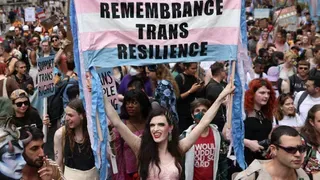March 14, 2017
HIV Transmission Declining In U.S., But Southern States Still Have Higher Rates
Eric Brus READ TIME: 3 MIN.
The annual number of new HIV infections in the U.S. decreased 18 percent from about 45,700 infections in 2008 to about 37,600 infections during 2014, according to the latest estimates from the Centers for Disease Control and Prevention (CDC). However, the CDC's analysis shows that progress in reducing HIV infections varied widely both in different population groups and in different areas of the country.
In particular, during the six-year period, the annual number of new HIV infections dropped:
In addition, the CDC researchers reported that annual HIV infections either decreased or remained stable in each of the 35 states and Washington, D.C. where annual HIV infections could be estimated. Decreases in new infections were particularly large in the following areas:
CDC attributed the decline to the success of HIV prevention and treatment efforts at the national, state, and local levels.
"The nation's new high-impact approach to HIV prevention is working," noted Jonathan Mermin, director of CDC's National Center for HIV/AIDS, Viral Hepatitis, STD, and TB Prevention. "We have the tools, and we are using them to bring us closer to a future free of HIV... We must ensure the interventions that work reach those who need them most."
In contrast to the progress seen in most demographic groups, the total number of infections among gay and bisexual men remained stable at about 26,000 new infections per year during 2008 through 2014. CDC notes that the decreased infections seen among White and the youngest gay and bisexual men were offset by increases in other groups.
In particular, HIV infections rose 35 percent among 25- to 34-year-old gay and bisexual men (from 7,200 to 9,700) and 20 percent among Latino gay and bisexual males (from 6,100 to 7,300). The CDC data also show regional disparities in HIV incidence, with the southern states having a disproportional number of new HIV infections. Although 37 percent of the U.S. population live in southern states, they accounted for half of estimated new HIV infections in 2014.
"Unfortunately, progress remains uneven across communities and populations," said Eugene McCray, director of CDC's Division of HIV/AIDS Prevention. "High-impact prevention strategies must continue to be developed and implemented at the state and local levels to accelerate progress. That means more testing to diagnose infections, increasing the proportion of people with HIV who are taking HIV treatment effectively, and maximizing the impact of all available prevention tools."
For further information, please see CDC's new fact sheet summarizing these findings and abstracts from CROI presentations on overall HIV incidence and prevalence and new infections among gay and bisexual men.
Eric Brus writes about HIV policy. His HIV/AIDS Disparities Report is produced by the New England AIDS Education and Training Center Minority AIDS Initiative Project. The full version is available online.




